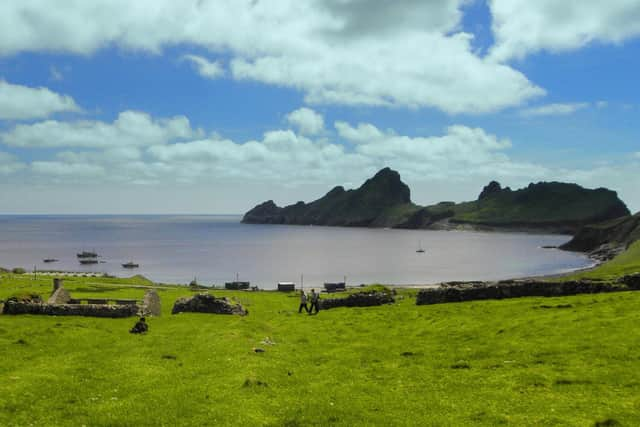'Bucket list' St Kilda to tackle growing visitor numbers
The increase in people arriving on St Kilda, which was abandoned by its last permanent residents in 1930, has been highlighted in National Trust for Scotland’s ten-year plan, which will shape management of the dual Unesco World Heritage Site, which sits in the Atlantic around 50 miles west of its nearest island neighbour.
The report said St Kilda was a “bucket list” destination where visitors experienced one of the “most remote and distinctive cultural landscapes in the world”, with many feeling a “strong emotional reaction” after landing at once-inhabited Village Bay on Hirta.
Advertisement
Hide AdAdvertisement
Hide AdThe document added: "Visitors should have an extraordinary experience on St Kilda, and tourism presents significant opportunities for economic, social and conservation benefits for the trust and the wider community. However, high visitor numbers concentrated in peak periods can have an impact on infrastructure, buildings, habitats and species, as well as the sense of place. Current numbers are largely within manageable levels, but we must consider our approach in order to deliver a sustainable future for tourism.”
The report added that a high volume of visitors, particularly during a short time period, could potentially affect the site through erosion and use of limited resources such as water, while presenting an increased risk of introducing new invasive species.
Visitors to St Kilda “began to increase markedly from 2005” given the advent of day trips and a rise in cruise ships, with numbers projected to grow.
Since 2015, the average number of visitors each year was 5,112, with around 58 per cent of them arriving in May and June.
Over-tourism has been identified as an issue at several World Heritage Sites around the world, with a sharp increase in visitors to Machu Picchu, Angkor Watt, the Taj Mahal and Venice.


However, both the location and climate of St Kilda has spared it from the worst problems over-tourism given the current visitor numbers, the report said.
The report said: “We are therefore ideally placed to be pro-active in our approach to this potential issue, to ensure a sustainable future for visitors. Over the next ten years, we will work to lessen the negative impacts and promote the positive benefits of tourism, managing St Kilda as an exemplar of sustainable tourism.”
NTS said it wanted to improve the visitor experience on the island while enhancing a St Kilda experience for those who don’t make the journey in person.
Advertisement
Hide AdAdvertisement
Hide AdThe conservation charity said it would work with island communities in Uist, Harris and Lewis who are pursuig the Slighe Hiort ( St Kilda Trail) project to bring the story of the islands closer to the people.
Meanwhile, offshore development linked to oil exploration and renewable energy in the North Atlantic has been identified as a potential threat to the setting of the World Heritage Site.
Climate change was also described as a “significant current threat” to the Outstanding Universal Value (OUV) of St Kilda given the impact of increasing sea-surface temperatures on marine species and breeding seabirds around the archipelago. Storm events posed a risk of coastal erosion, which could threaten archaeological deposits and structures.
Comments
Want to join the conversation? Please or to comment on this article.